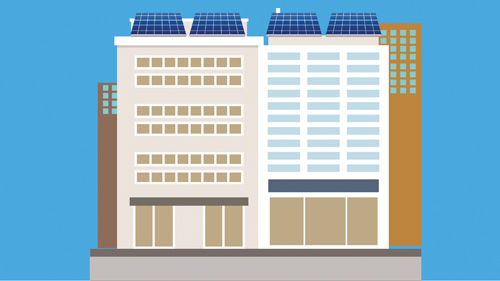With heightened pressure for businesses to adopt sustainable business practices, the commercial real estate industry has a viable role to play in the fight against climate change. In fact, according to the U.S. Energy Information Administration (EIA), the built world accounts for more than 40 percent of the planet’s carbon emissions, which means that the real estate industry can play a major role in the solution.
Climate change is also becoming a financial risk for companies. With the misconception that sustainability equipped buildings are extremely costly, there are many considerable no- to low-cost options available for decarbonization, according to JLL’s latest global research report, Decarbonizing the Built Environment. The report states that 43 percent of investors have a net zero carbon race-to-zero goal, and 38 percent of investors say they have published or measured environmental goals, like having wind- or solar-powered capabilities. However, to make a reasonable difference on our environment, these numbers need to continue to grow. The first step is education and understanding exactly how industry leaders can put this into action.
The commercial real estate industry has a viable role to play in the fight against climate change. A few ways in which businesses can reimagine their carbon-reduction objectives are through:
- Establishing an opera-tional carbon baseline — In the built environment, an operational carbon baseline is an inventory of sources of carbon emissions from a property’s operations. Reviewing snapshots from one or many years can help measure its progress in reducing emissions.
- Procuring renewable electricity — Implementing a strategy that procures renewable energy can make a whirlwind of difference.
- Building an on-site energy project — On-site energy is often the most cost-effective solution in the long run, reducing the cost of transmission and distribution from the local utility at the source.
- Implementing energy conservation measures — Fully reviewing equipment and usage can help determine carbon footprint and how to lessen it. For example, installing LED lighting, making HVAC improvements, and installing energy-efficient windows are all ways to reduce footprint. Other tactics can be shutting the lights off during certain periods of the day, like California has been doing to save on energy consumption.
More and more companies are participating in the “race to zero” to transition to cleaner and greener operations, both for the impact the built world has on the environment and due to stakeholder and occupier pressure. Through a strategic plan, businesses can start to make a major difference and help shape a greener built world for years to come.
